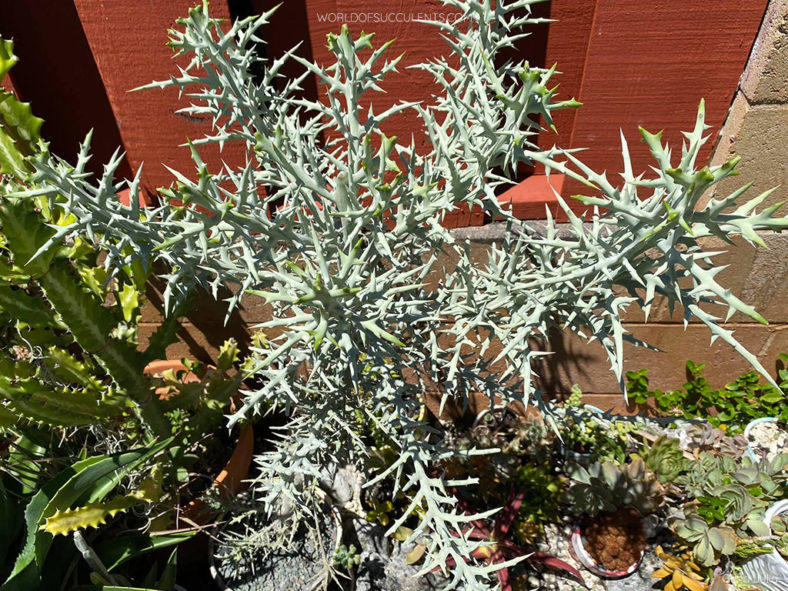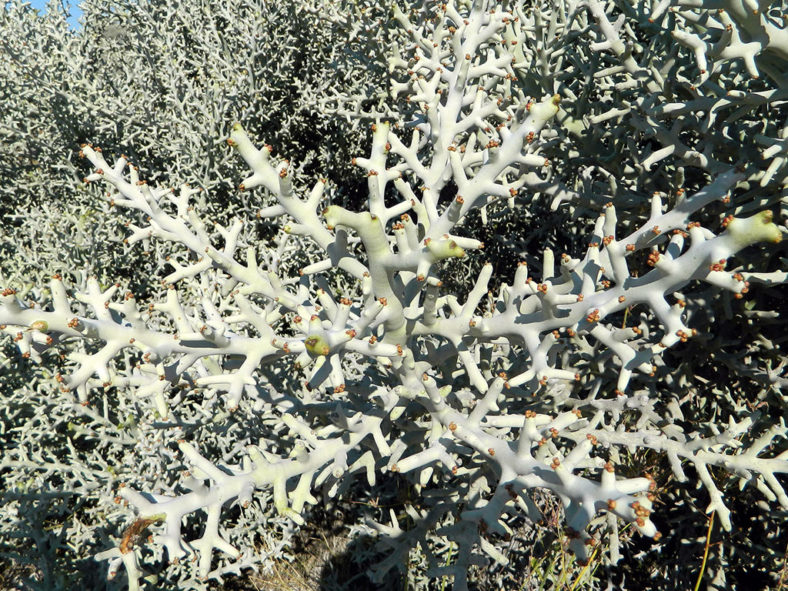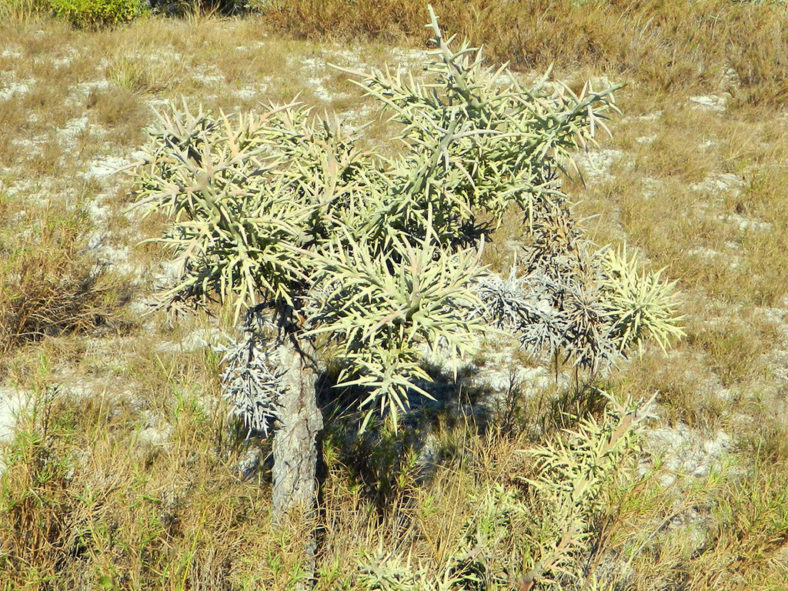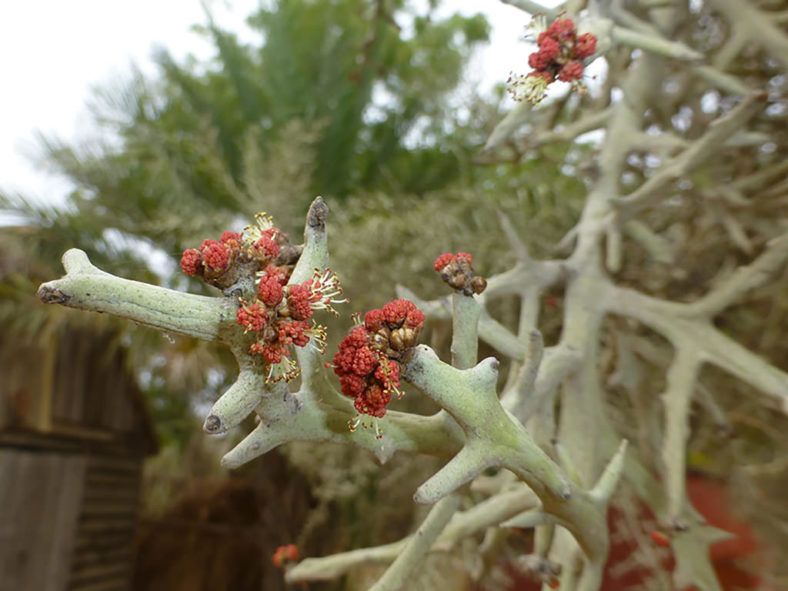Scientific Name
Euphorbia stenoclada Baill.
Common Name(s)
Stiver Thicket
Synonym(s)
Euphorbia cirsiodes, Euphorbia stenoclada subsp. stenoclada, Tirucalia stenoclada
Scientific Classification
Family: Euphorbiaceae
Subfamily: Euphorbioideae
Tribe: Euphorbieae
Subtribe: Euphorbiinae
Genus: Euphorbia
Etymology
The specific epithet "stenoclada (sten-oh-KLAD-uh)" means "narrow-branched" and refers to the short spine-tipped branches.
Origin
Euphorbia stenoclada is native to Madagascar and the Mozambique Channel Islands (Europa Island). It grows in subtropical or tropical dry forests, subtropical or tropical dry shrubland, and rocky areas.
Description
Euphorbia stenoclada is a much-branched succulent shrub or small tree with leafless branches that bear alternate spines formed from modified branchlets. It can grow up to 20 feet (6 m) tall, developing a thick trunk and a flat-topped crown of olive-green wax-coated branches. The trunk is covered with rough bark and can reach up to 8 inches (20 cm) in diameter. The spines can grow up to 1.2 inches (3 cm) long.
The branches terminate in tightly packed clusters of tiny crimson cyathia in spring. The fruits are green, lightly hairy subglobose capsules that can grow about 0.25 inches (0.6 cm) in diameter.

How to Grow and Care for Euphorbia stenoclada
Light: This succulent is a sun lover. Place your indoor E. stenoclada in a sunny window. You may place the pot on the balcony or in the garden from spring to fall. Increase sun exposure gradually to prevent sunburn.
Soil: E. stenoclada requires well-drained soil. Use a commercial mixture formulated for succulents, or make your own potting mix.
Temperature: High summer temperatures are not a problem, but low winter temperatures can damage or kill your plant. E. stenoclada can withstand temperatures as low as 30 °F (-1.1 °C). USDA Plant Hardiness Zones 10a to 11b, 30 to 50 °F (-1.1 to 10 °C).
Watering: From spring to fall, water when the top inch (2.5 cm) of soil feels dry. Reduce watering in winter. Give it just enough water to prevent wilting. The best time of the day to water your E. stenoclada in the warm season is the evening.
Fertilizing: Plants in a pot need regular feeding. Apply a balanced fertilizer in a 10-10-10 NPK formulation, diluted to 1/4 strength weekly during the growing season.
Repotting: E. stenoclada will benefit from repotting, but it does not need to be repotted yearly. When your plant is outgrowing its pot, it is time to repot it in a larger pot and give it a fresh potting mix. The repotting is best done in early spring, at the beginning of the growing season. Wear gloves, protective clothing, and appropriate eye protection when repotting this succulent.
Propagation: The easiest and fastest method of propagation for this plant is by using cuttings. It can also be grown from seeds but can be difficult to germinate. The best time to take cuttings is in spring or summer. Sow the seeds in spring.
Learn more at How to Grow and Care for Euphorbia.
Toxicity of Euphorbia stenoclada
E. stenoclada produces a white milky sap that is toxic and can cause irritation to the skin and eyes. Therefore, keeping your plant away from children and pets is best.
Links
- Back to genus Euphorbia
- Succupedia: Browse succulents by Scientific Name, Common Name, Genus, Family, USDA Hardiness Zone, Origin, or cacti by Genus
Photo Gallery
Click on a photo to see a larger version.


